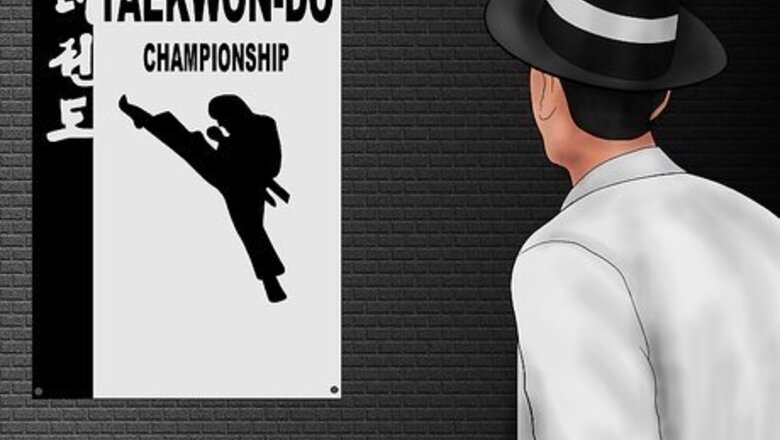
views
Before the Match
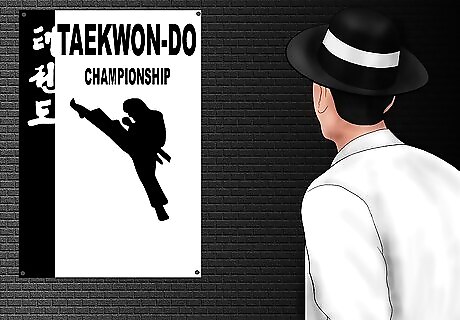
At the very beginning The moment you hear of a competition you may wish to enter, this is when your training should begin. You should indicate your interest to your teacher as he is the one who will be your coach during the tournament, and handling most of the administrative matters. In most matches, Yellow, blue and red, and black belts compete in Taekwondo sparring tournaments. If you aren't at that level yet, don't despair, but train for the future such that once you are able to enter a competition, you will be better prepared than most.

Build up your Stamina The fight in the ring will last three rounds of 1-2 minutes, depending on what competition you enter. In between, there will be rest periods of about half a minute. In order to sustain this kind of pace, you will need to build up your stamina. Run every other day, at 70% of your heart rate or do interval sprints. In order to do this, subtract your age from 220. This value is your maximum. Multiply this figure by 70%. The result is the number of beats your heart should make a minute as you run. In order to count this easily, divide it by 6 so that you only have to count for 10 seconds. As you run, press your finger against your carotid artery and feel the pulses, counting for 10 seconds. For example, if you are 16, your maximum heart rate is 220-16=204. 70% of your heart rate is then 204*70%= 142.8. You can thus calculate that in 10 seconds, your heart should beat 142.8/6=23.8. Therefore, as you run, feel to see if your heart beats about 24 beats a minute. If it is, you will be able to build up endurance this way. Do a whole array of kicks with strength until you are tired, and time yourself. When you are able to keep this up nonstop for 4.5 minutes, you're doing well.

Stretch Constant stretching will allow you to kick higher and faster. It also loosens the muscles and prevents strains. Ideally, you should stretch every day. Pushing yourself slightly beyond your limit will allow you to stretch further progressively, but beware of over-aggressive stretching which might result in torn muscles or ligaments.

Equipment Most sparring matches require the use of the hogu (body protector), a helmet, arm and shin guards, gloves and groin guards for both genders. The target areas are the front and sides of the hogu, and the front and sides of the head. Any other strike would either not be considered, or considered a foul.

Practice your Kicks During the tournament, most of the kicks you will be doing are turning kicks, due to competition rules which disallow pushing kicks. Only participants above the age of 12 (18 in some places) are allowed to kick at head level. Practice your kicks with a bag or hand mitts, in order to develop accuracy and strength. You should practice the following kicks every day, at least 10 times each with both legs: Turning kicks, both with the front and rear legs Back kicks (Back thrust) Back hooks Sidekicks Slamming kicks (Axe Kick) Jumping back kicks Jumping back hooks
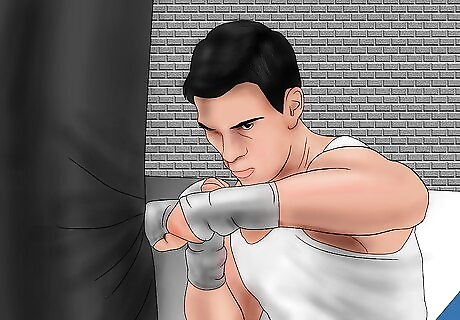
Practice your Punches While punching is allowed, it is a commonly known fact that judges rarely count them, and often do not count many kicks as well. Despite this, working on your punches is good, because if you can punch strongly, you will be able to weaken your opponent. Practice with a heavy bag.

Practice your Blocking Blocking off an opponent's attack will deprive them of points. Practice all sorts of blocks until you can do them simultaneously with your kicks. For example, as you do a turning kick, the front of your body may be open, a good place to counter-attack. Ensure you are constantly blocking your head and your body with both arms, and be prepared to knock away kicks from your opponent.
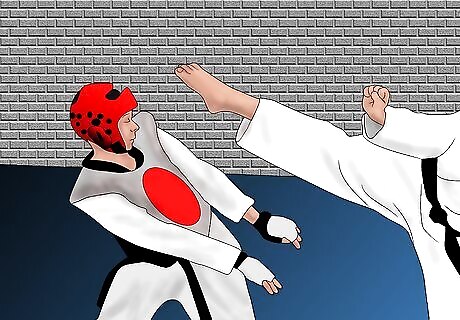
Practice your Evading Another way of defending yourself is to evade the kick. You should skip away to the side, or backwards, as quickly as possible. Practice this until your reactions are quick and you can successfully dodge a kick at full speed.
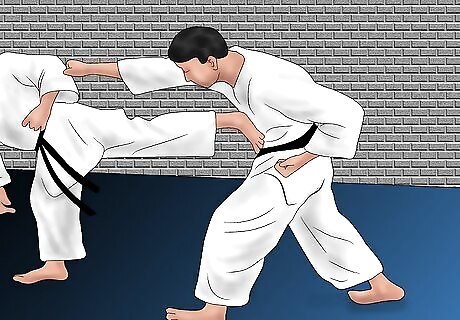
Practice your Counterattacks These kicks are the most likely to score points because many fighters let their blocks fall when they start attacking. When your opponent brings up their leg for a kick, you should immediately identify what kick it is and counter where they are open. A good counter should involve blocking or evading their attack and then striking quickly. For example: If the opponent does a turning kick, you can either lean back to avoid it or use your arm to block it, then go in with a turning kick of your own. Or, you could just attack quicker than your opponent, and strike with a suitable back kick or hook. As long as you hit them first, with power, you should be able to earn the points. If the opponent does a back kick, evade to the side and attack with a turning kick.
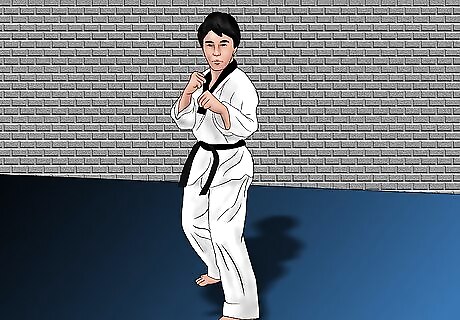
Check your Fighting Stance The stance you adopt on fighting in the ring is very important. The following tips will ensure a better defense and better attack position: Stay on the balls of your feet so that you are ready to move when necessary, and move quickly. Bounce up and down as you do so so that you can hide your next move, and also such that you will be in a better position to perform jumping kicks. Your front arm should be up and protecting your head from attack. This arm should be primed to move sideways or downwards quickly to block off an attack. Your other arm should be close to your front and also ready to move.
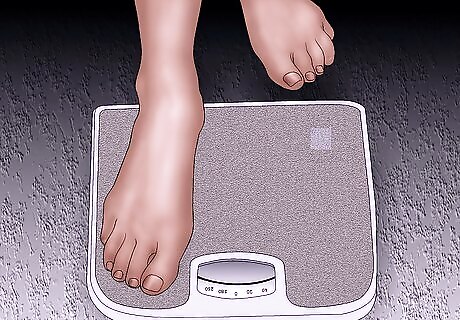
Weight Categories All fighters must be in their own weight categories in order to make the fight fairer. You must choose which category you will be in, and stay within that weight. There will be a weigh in several weeks before the fight.

The Day Before the Match On the day before your match, just practice lightly and do not overstrain yourself. It would be good to 'carbo-load'. This involves eating starchy foods which store themselves in your body as glycogen, which can easily be used to produce energy during your match. Do not starve yourself to maintain your weight category; neither should you dehydrate yourself.
During the Match

On the Morning of your Match You should have had a well-rested night of sleep. In the morning, eat foods which release energy slowly and throughout the day, such as carbohydrates. Stretch yourself and mentally run through all your strategies.

Turn up Early You should get the schedule of when your bouts are and proceed to the sparring area early. If you are able to get the schedule of when your opponents fight, you can watch them and prepare for your match. Similarly, you should change styles in different rounds so that your strategy cannot be preempted. One of the great things about Taekwondo is that you do sparring in all styles. Sparring is like a controlled combat or fighting situation. You wear gear, people punch and kick you, and you punch and kick them. It helps you to understand and learn how to handle things coming at you quickly.
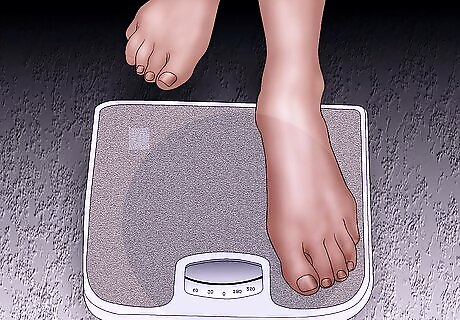
The Final Weight Check When your bout number is announced, you will proceed to the weight station where you have to report for the match, as well as be weighed to ensure you are within your category, and possibly checked that you are wearing all your protective equipment, that your nails are cut and other safety measures are taken to avoid unnecessary injury to yourself or your opponent.
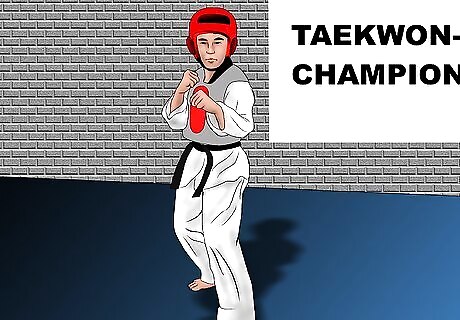
The Holding Area This is possibly the tensest moment you will have. You will be sitting with your opponent in the holding area, waiting for your turn to go to the ring. If you are nervous at this stage, it's perfectly fine to get up and pace around. This also lets your muscles relax. At the same time, with a rational mind, size up your opponent. For example, by guessing his height, you can prepare to do head kicks.

The Fight During the fight itself, trust your coach and do as he says. Your mind will be focused on attacking your opponent and taking him out, and it is important for your coach to remind you of your strategies. The process is as follows: The referee points to the ground with their right and left hands, saying 'Chung, Hung'. This means 'blue, red', and indicates where you should stand. The referee will then say 'chareot' to get you to attention, and 'kyueng-rye' to get you to bow to the judges and each other. The referee then says 'gyeorugi choonbi', upon which you enter your fighting stance. He then says 'shijak', and the fight begins! You should stop immediately if the referee says 'kuman' or 'kalyo'.

Point deductions may be given out, and these take the form of either half or full points. Try to get the first point, as this psychologically intimidates the opponent and gives you an edge up. Attack quickly when the signal is given to start. 1 point is given for kicks to the hogu (body protector), 2 points for kicks to the head (should these be allowed), and 1/2 or 1 point may be deducted for fouls.




















Comments
0 comment